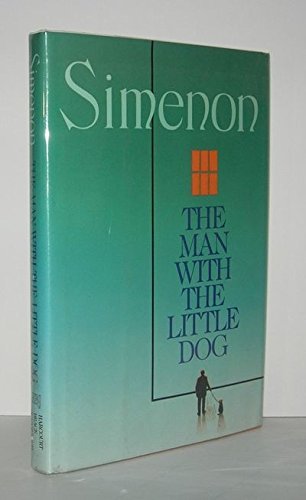Dogs Raining (reigning) in My Mind 12
Perhaps the most complex relationship portrayed in literature between a man and his dog unfolds in Georges Simenon’s The Man with the Little Dog, published in 1964. In the novel, by the celebrated French writer better known for his Detective Maigret mysteries, Felix, a middle-aged Parisian book clerk is dying of cancer and contemplating suicide. Eight year ago, he was released from prison after serving a five-year sentence for murdering his wife’s lover. One day, on a lark, he adopts a small mutt from a shelter after his goldfish keep dying. Bib, whose previous owner trained him to do all sorts of circus tricks, becomes Felix’s only friend and confidante and accompanies him on long walks around the city. Bib seems to grasp that Felix is nearing the end of his life. Their spoken and unspoken conversations transport the reader deep into the subconscious (never the canine one) where Felix assays the difficult questions of humanity that I assay every time I walk with Bonnie and Clyde, questions that most Americans never bother assaying because the answers don’t read as scripts, and in fact, there are no answers at all. The novel concludes with Felix being hit by a bus that reads to me as suicide. Bib survives the “accident” and is placed back in the shelter. He could not save Felix and Felix made no provision for his welfare. I don’t mind the suicide, but I hate the lack of provision, a last final act of indifference and selfishness. A colossal failure by a man that required merely a simple gesture to a beloved companion, a dog.
When I was a teacher at Newport High School, I used to walk my journalism students off campus to an animal shelter. It was a kill shelter. The assignment: choose a dog (or cat) facing likely euthanasia, interview staff about the animal’s history and personality, take its photograph, then write a short piece from the perspective of the animal, pleading for adoption. The plea and accompanying photograph would then be published in the school newspaper, a publication distributed in dozens of places around the county. I graded the assignment like this: A+ if the dog is adopted and lives. F if the animal is not adopted and dies. Some students objected to the pressure. A few even cried. I didn’t care. “Drop the class and take strength training or child development,” I said. “This is a real writing standard!”
In all my years teaching there, I never gave an F for this assignment.
All of my greatest thrift store clothing finds have occurred in thrift stories dedicated to supporting animal shelters. The greatest of all was the corduroy coat, with suede accents, flannel lining and leather buttons, made in Yugoslavia! It cost 99 cents. My dogs loved it. All dogs I encounter do. (Many humans, too) They know corduroy means good beach dog business is about to unfold.
I have long desired to sit on a jury where the state was trying some animal rights activist for committing some act of violence against a research laboratory that conducted experiments on beagles in the name of improving humanity. I would lie under oath to sit on that jury. I would employ all my powers of humanity to acquit the accused or hang the jury. I would be dogged in my efforts.
 As I look over my life with dogs, one of the more memorable moments was getting drunk with Ray, my shepherd mix, a stray rescued from Highway 101, at my inebriated side, when I was painting (slopping) the interior of a dilapidated house on the Nestucca Bay National Wildlife Refuge, my home for ten years when I served as caretaker. It was whiskey if I recall, perhaps vodka, and I listened to the radio and remember singing along to Natalie Imbruglia’s “Torn” and that line lying naked on the floor, perhaps wrestling on the floor with Ray while I was singing it. Ray was brand new to me then and I hadn’t had a dog in almost 20 years. I now conclude good dog things began happening to me in that white room with Ray, and then later, they slipped away from me.
As I look over my life with dogs, one of the more memorable moments was getting drunk with Ray, my shepherd mix, a stray rescued from Highway 101, at my inebriated side, when I was painting (slopping) the interior of a dilapidated house on the Nestucca Bay National Wildlife Refuge, my home for ten years when I served as caretaker. It was whiskey if I recall, perhaps vodka, and I listened to the radio and remember singing along to Natalie Imbruglia’s “Torn” and that line lying naked on the floor, perhaps wrestling on the floor with Ray while I was singing it. Ray was brand new to me then and I hadn’t had a dog in almost 20 years. I now conclude good dog things began happening to me in that white room with Ray, and then later, they slipped away from me.
They are flowing back to me now and I am starting to howl. I might even listen to “Torn” again and sing it to Bonnie and Clyde along the river.
(If you found this post enjoyable, thought provoking or enlightening, please consider supporting a writer at work by making a financial contribution to this blog or by purchasing an NSP book.)

